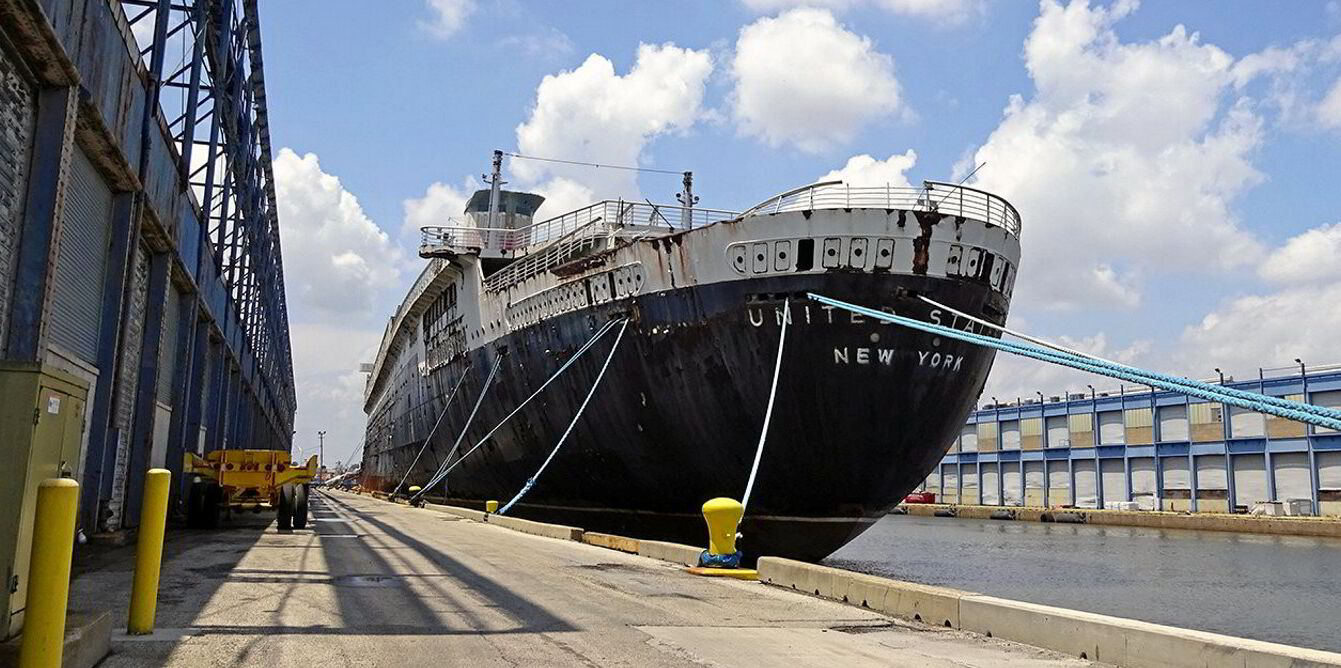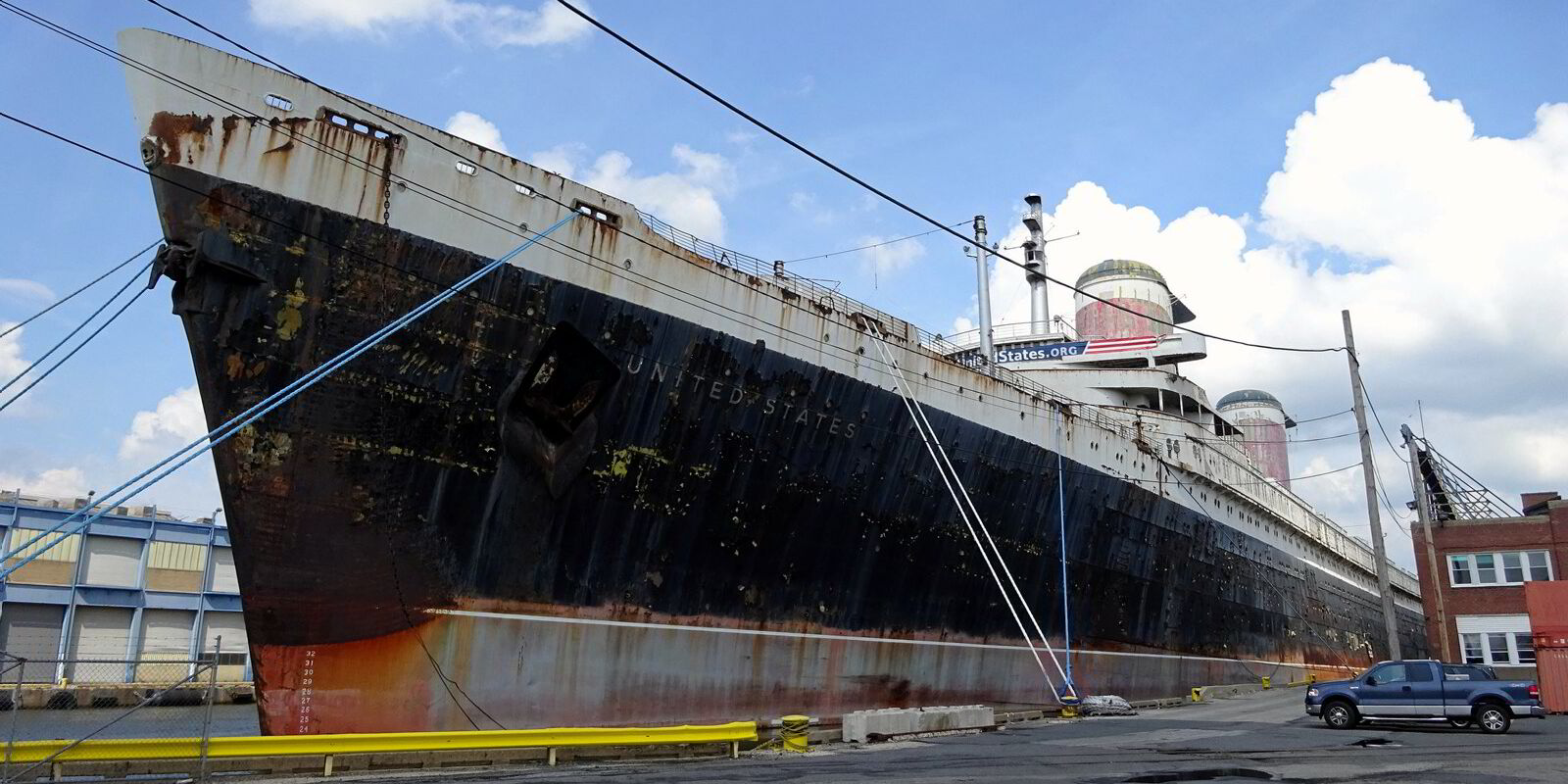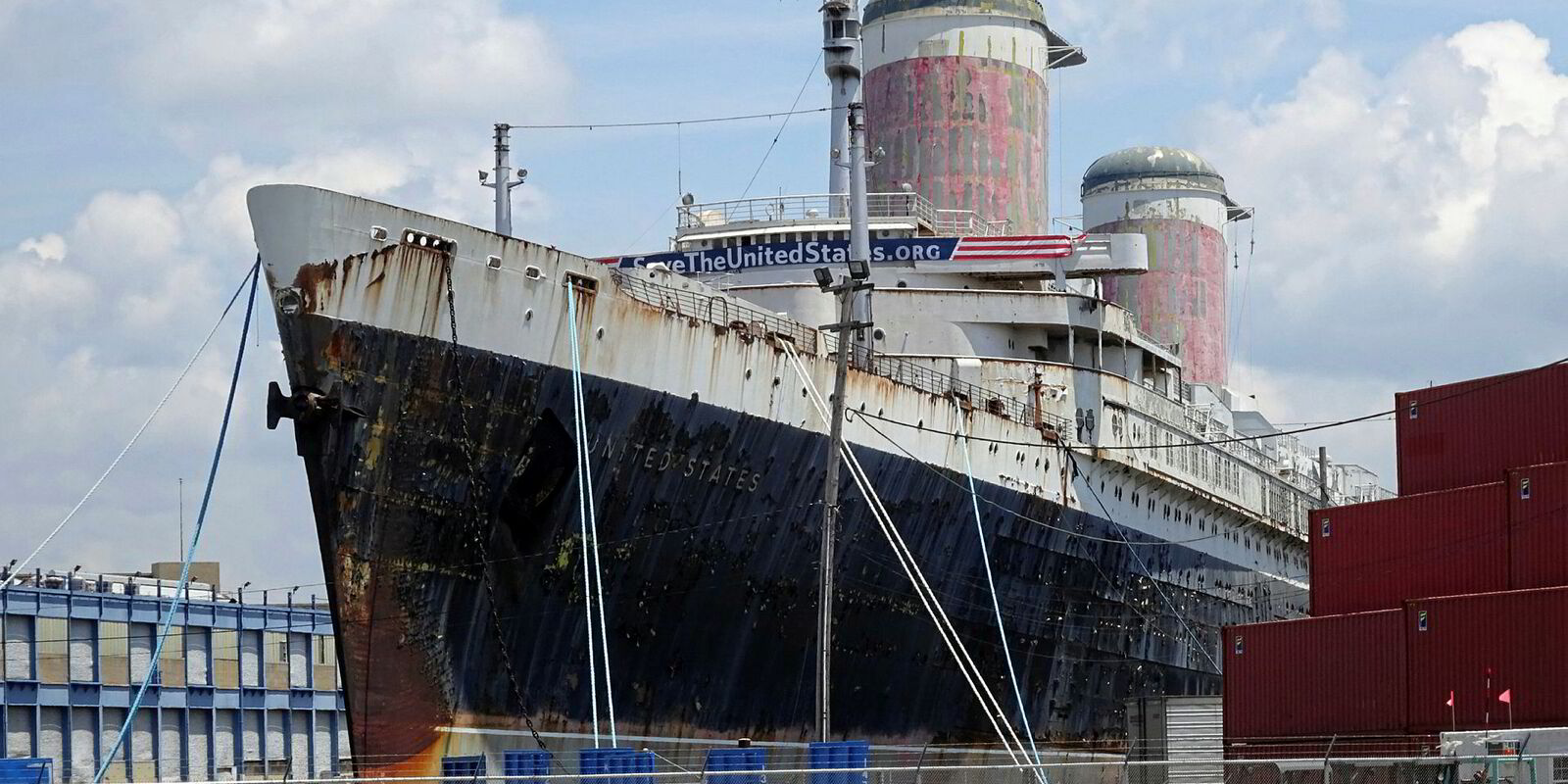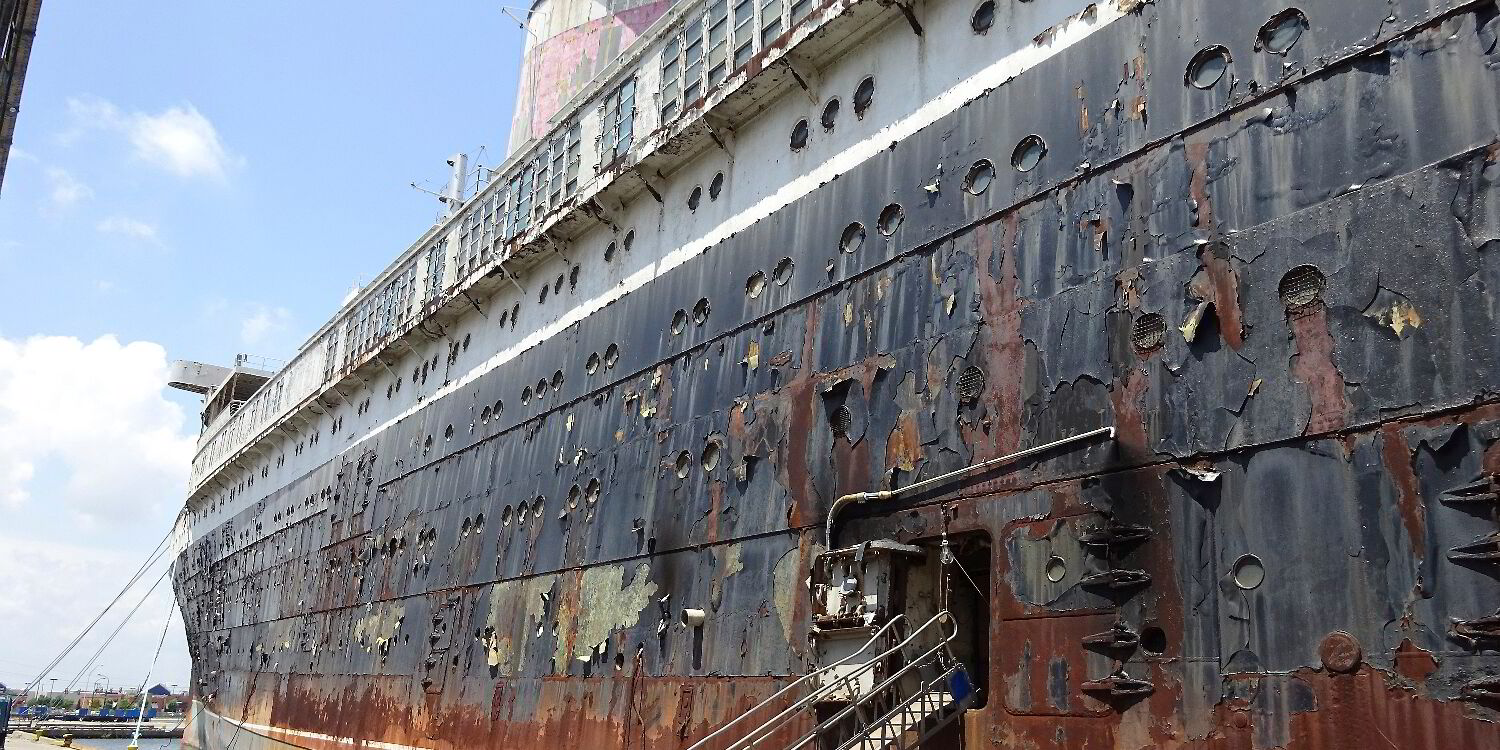During its heyday in the 1950s, it was the flagship of the US merchant marine, capable of crossing the Atlantic in a mere 3.5 days.
Its current owners call it the most famous ship in the world that didn’t sink.
Neither accolade impressed a Philadelphia judge who has ordered that it be removed from a long-time lay-up berth.
US District Court Senior Judge Anita Brody has given the SS United States Conservancy, owner of the 53,000-gt former transatlantic liner United States (built 1952), until mid-September to find a new berth to dock the historic vessel that has not carried a passenger or moved under its own power since 1969.
The ruling ended the conservancy’s two-year legal dispute with Penn Warehousing, owner of the pier at which the ship has been moored for decades.
Penn Warehousing wants to evict the United States so that the area in which the pier is located can be redeveloped for better commercial use. The conservancy pays $60,000 per month to keep its ship alongside.
The conservancy filed a countersuit, claiming that Penn Warehousing breached the original terms of the long-term lease negotiated in 2011 by doubling the docking fees without notice in 2021, and then issuing an eviction notice when the owners refused to pay the additional amount.
While Judge Brody sided with the conservancy by ruling that Penn Warehousing could not double docking fees without notice, she ordered that the ship be removed by 12 September.
In a statement on the conservancy website, its president, Susan Gibbs, granddaughter of the ship’s designer, William Francis Gibbs, described the decision as a partial victory, given that the organisation was not compelled to pay a large sum of back rent to the pier operator.
However, she said the ruling is a serious threat to the future of the ship.
“The judge’s decision gives us a very limited window to find a new home for the SS United States and raise the resources necessary to move the ship and keep her safe. We must do both to avoid the tragic fate that countless supporters from around the world have worked for over a decade to prevent,” said Gibbs.
That tragic fate is a recycling sale.
“Relocating a ship the size of the SS United States is complex and costly. It requires funds for insurance, tugs, surveys and dock preparations to ensure the ship’s safe passage to a new home,” Gibbs said.
The conservancy has been exploring potential pier locations in the Philadelphia area and along the east coast able to accommodate the United States.
Storied past, uncertain future

The conservancy acquired the United States from Norwegian Cruise Line in 2011 after the then Genting-owned operator gave up on its plans to revive the long laid-up vessel as a US-flagged cruise ship.
Since then, the non-profit organisation has been searching for partners to repurpose it for a new role. Plans including a cruise revival under Crystal Cruises and various static casino and hotel roles have been considered but so far failed to come to fruition, primarily because of the difficulties in finding suitable permanent docking space for a 302-metre ship.
Lawyers representing Penn Warehousing told the Philadelphia Inquirer that the company took no joy in its court victory, and while the “best hope of everyone involved” was that the conservancy could successfully repurpose the ship, after decades of decay and delay, it was time to “acknowledge the unavoidable and return Pier 82 to productive commercial service”.
The United States was considered the country’s flagship when it first sped across the Atlantic in 1952 with 1,900 passengers at 35.5 knots, a speed that has never been beaten by any other large commercial passenger ship.
Built during the height of the Cold War, and designed for quick conversion into a troopship, the ship’s construction and operation were heavily subsidised by the US government.
High operating costs forced it into lay-up in 1969. Several subsequent owners’ aborted plans to restore the ship to service have left it a gutted hulk.
It has been threatened with scrapping on several occasions in the past.





